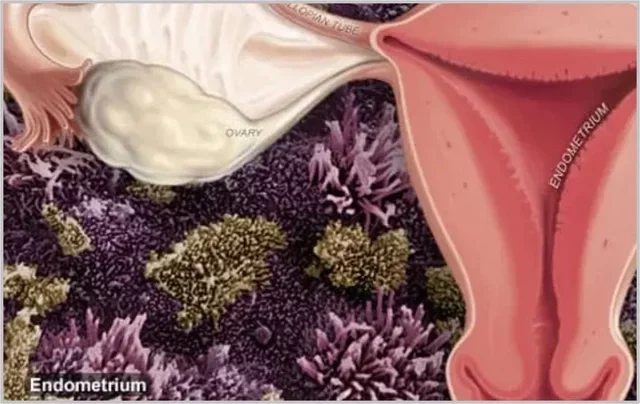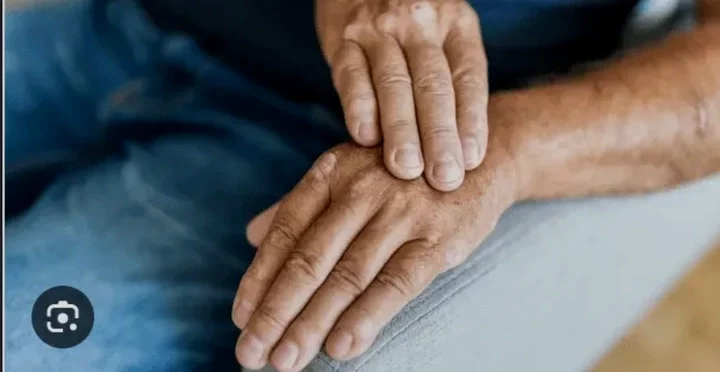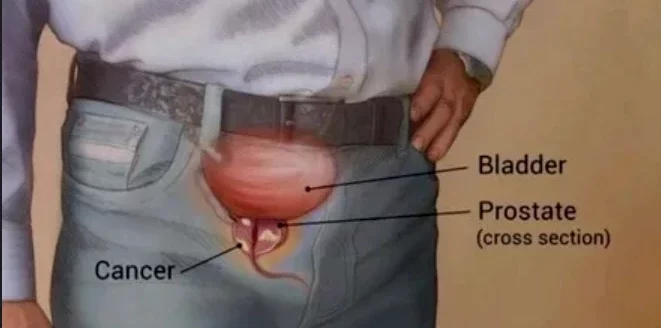
Endometriosis happens when tissue normally found inside the uterus grows in other parts of the body. It may attach to the ovaries, fallopian tubes, the exterior of the uterus, the bowel, or other internal parts. As hormones change during the menstrual cycle, this tissue breaks down and may cause pain around the time of your period and longterm painful adhesions or scar tissue. More than 5.5 million American women have symptoms of endometriosis.
ENDOMETRIOSIS SYMPTOMS
Pain just before, during, or after menstruation is the most common symptom. For some women, this pain may be disabling and may happen during or after sex, or during bowel movements or urination. It sometimes causes ongoing pain in the pelvis and lower back. Many women with endometriosis have mild or no symptoms, though. The symptoms may be related to the location of the growths.
JUST CRAMPS OR ENDOMETRIOSIS
Most women have some mild pain with their menstrual periods. They may get relief from over-the-counter pain medications. If the pain lasts more than 2 days, keeps you from doing normal activities, or remains after your period is over, tell your doctor.
ENDOMETRIOSIS AND TEENS
Endometriosis pain can begin with the first menstrual period. If your menstrual pain is strong enough to interfere with activities, you should consult your physician. The first step may be tracking the symptoms and taking pain medication, but ultimately the treatment options for teens are the same as for adults.
ENDOMETRIOSIS AND INFERTILITY
Sometimes the first - or only - symptom of endometriosis is trouble getting pregnant. Infertility affects about a third of women with the condition, for reasons that aren't well understood. Scarring may be to blame. The good news is that medical treatments can help someone overcome infertility, and pregnancy itself can relieve some symptoms of endometriosis.
ENDOMETRIOSIS OR FIBROIDS
Endometriosis is one cause of severe menstrual pain. But the pain can be caused by another condition, such as fibroids, which are noncancerous growths of the muscle tissue of the uterus. Fibroids can cause severe cramps and heavier bleeding during your period. The pain of endometriosis or fibroids can also flare up at other times of the month.
WHAT CAUSES ENDOMETRIOSIS
Doctors don't know why endometrial tissue grows outside of the uterus, but they have several theories. Heredity plays a role, and some endometrial cells may be present from birth. Another theory suggests that menstrual blood containing endometrial cells flows back through the fallopian tubes and into the pelvic cavity instead of out of the body. These cells are thought to stick to organs and keep growing and bleeding over time. Cells could also move to the pelvic cavity other ways, such as during a C-section delivery. A faulty immune system may fail to get rid of the misplaced cells.
The brown cells seen here are endometrial cells removed from an abnormal growth on an ovary.
Endometriosis: Who Is at Risk, The condition is more common in women who: Are in their 30s and 40s, Have not had children, Have periods longer than 7 days, Have cycles shorter than 28 days, Started their period before age 12, Have a mother or sister who had endometriosis
Diagnosis: Tracking Symptoms
Your pattern of symptoms can help to identify endometriosis, including: When the pain happens, How bad it is
How long it lasts, A change or worsening of pain, Pain that limits your activities, Pain during sex, bowel movements, or urination
DIAGNOSIS:
PELVIC EXAM
Your doctor will do a pelvic exam to check your ovaries, uterus, and cervix for anything unusual. An exam can sometimes reveal an ovarian cyst or internal scarring that may be due to endometriosis. The doctor also looks for other pelvic conditions that could cause symptoms similar to endometriosis.
DIAGNOSIS: PELVIC SCANS
Although it isn't possible to confirm endometriosis with scanning techniques alone, your doctor may order an ultrasound, CT scan, or MRI to help with diagnosis. These may be able to detect larger endometrial growths or cysts. The scans use sound waves, X-rays, or magnetic fields with radiofrequency pulses to create the images.
Diagnosis: Laparoscopy
Laparoscopy is the only sure way to determine if you have endometriosis. A surgeon inflates the abdomen with gas through a small incision in the navel. A laparoscope is a viewing instrument that's inserted through the incision. The surgeon can take small pieces of tissue for a lab to examine - called a biopsy - to confirm the diagnosis.
TREATMENT: PAIN MEDICINE
Pain medications, such as acetaminophen, and nonsteroidal anti-inflammatory drugs (NSAIDs), like ibuprofen or naproxen, often help relieve the pain and cramping that comes with endometriosis. But these drugs only treat the symptoms and not the underlying endometriosis.
TREATMENT: BIRTH CONTROL PILLS
Oral contraceptives manage levels of estrogen and progestin, which make your menstrual periods shorter and lighter. That often eases the pain of endometriosis. Your doctor may prescribe pills to be taken continuously, with no breaks for a menstrual period, or progestin-only therapy. Progestin-only therapy can also be given as a shot, or via birth control patches, vaginal rings, or intrauterine devices (IUDs). Endometriosis symptoms may return after you go off the birth control.
TREATMENT: OTHER HORMONE THERAPIES
These drugs reduce or eliminate periods along with endometriosis symptoms. Danazol (Danocrine) works mainly by lowering estrogen. Gonadotropin-releasing hormone (GnRH) agonists, like Lupron, Synarel, and Zoladex, and antagonists, like elagolix (Orilissa), keep your body from making female hormones. Elagolix-estradiol-norethindrone (Oriahnn) and relugolix-estradiol-norethindrone (Myfembree) combine a GnRH receptor antagonist with two other types of hormonal drugs.
TREATMENT: EXCISION
During a laparoscopy, the surgeon may remove visible endometrial growths or adhesions. Most women have immediate pain relief. A year after the surgery, though, about 45% of women will see their symptoms come back. The odds of symptoms returning rises over time. Hormone therapy started soon after surgery may improve the outcome.
TREATMENT: OPEN SURGERY
Severe cases of endometriosis may require laparotomy, or open abdominal surgery, to remove growths, or a hysterectomy - removal of the uterus and possibly all or part of the ovaries. Although this treatment has a high success rate, endometriosis still recurs for about 15% of women who had their uterus and ovaries removed.
GETTING PREGNANT WITH ENDOMETRIOSIS
Many women with endometriosis don't have trouble getting pregnant. But laparoscopic surgery can improve the pregnancy rate of women who have moderate to severe endometriosis. In vitro fertilization is an option if infertility persists. The sperm and egg are combined in a lab and the resulting embryo is implanted into the uterus.
COPING WITH ENDOMETRIOSIS
Although there is no way to prevent endometriosis, you can make lifestyle choices that will help you feel better. Regular exercise may help relieve pain by improving your blood flow and boosting endorphins, the body's natural pain relievers. Acupuncture, yoga, massage, and meditation also may help ease symptoms.
AN END TO ENDOMETRIOSIS
For most women, endometriosis recedes with menopause. Some women find relief from endometriosis during pregnancy. In some cases, symptoms may simply go away. About one-third of women with mild endometriosis will find that their symptoms resolve on their own.

















Comments